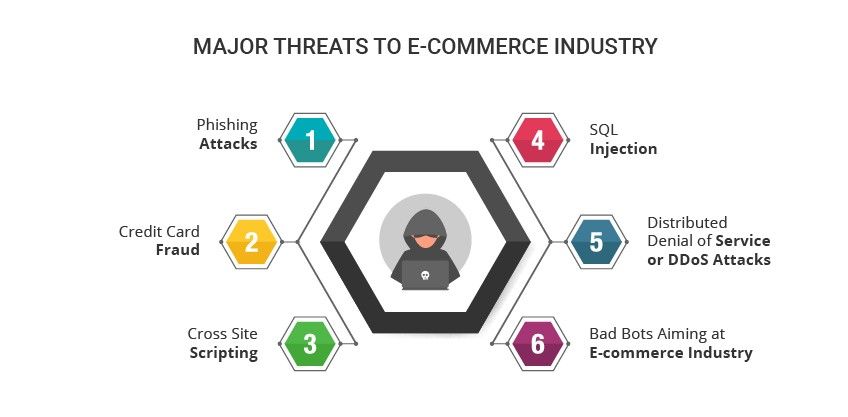Recommended Blogs
Security Threats Are Haunting the E-commerce Industry. How Can Security Testing Help

Contents
Cybersecurity has become one of the crucial features of the e-commerce industry. Without maintaining proper security practices, online merchants put themselves and their customers at high risk for payment fraud. Smaller companies have a higher risk of security scams due to inadequate internet security from cybercrimes.
Not just hacking, but accepting fraudulent payment has also become a huge risk for all e-commerce companies. These security issues not only cause financial consequences but also hamper a brand’s reputation. Especially at the time of the big sales like Black Friday and Cyber Monday, these fraudulent activities increase as the number of customers on the website increases. Last year’s Black Fridaysale records speak for themselves.
Major Threats to an e-commerce company
E-commerce security risks can be caused accidentally, intentionally or can be caused by a human error. The most predominant cybersecurity threats include phishing attacks, credit card fraud, DDoS Attacks, unprotected online services, etc. The user data such as login credentials, credit card numbers, etc. are some sensitive information that is protected by a customer. However, when it comes to e-commerce websites, we do not think and put our card number, CVV, and other information demanded by the e-commerce companies to make our transaction successful without being aware of its security.
Here are the main types of security threats to an e-commerce company.
1. Phishing attacks
Phishing attacks target user data like login credentials and credit card numbers. These attacks use social engineering methods where an attacker poses as a trusted entity and deceives a victim into opening an email or a text message.
2. Credit card fraud
There are several areas within an e-commerce website that aids as a point of interruption for a hacker to take payment and user information. An attacker by using malware extracts credit card information and sells the data. After this, the fraud is committed to mining the highest value possible through ATM withdrawals, e-commerce transactions, etc.
3. Cross-Site Scripting
This form of cyber attacks gives attackers access to the user’s information that is stored in the user’s computer. In this attack, the attacker inserts a JavaScript snippet on a vulnerable web page, and to a browser, it looks like a normal script and is executed in a normal manner. These attacks leave the website vulnerable to phishing attempts or malware installation.
4. SQL Injection
Website security SQL injection can shake any website using an SQL database, which includes various well-known e-commerce platforms like Magento. In this type of attack, a hacker inserts malicious SQL statements in a payload which looks like an authentic SQL inquiry. The attacker creates an administrative account for himself, erase database entries, or view private information if they manage to access the database. This is where magento consulting services can really help: they’ll review your setup, find security gaps, and guide you on how to fix them before they become a problem.
5. Distributed Denial of Service or DDoS Attacks
High-profile e-commerce sites are susceptible to DDoS attacks, and smaller e-commerce sites may also be vulnerable if their DNS provider is targeted. This attack aims to take down the site by disturbing servers with requests. This attack overloads the servers, slowing them down considerably and taking the site temporarily offline, averting legitimate users from accessing the site or completing orders.
6. Bad Bots Aiming at E-commerce Industry
Bots are prevailing all over the Internet, and they can be both good and bad. Good bots are generally used by search engines to index and crawl the websites for search results. Whereas, bad bots gather information from websites such as card details, login details, etc. or take over real accounts by guesstimating the passwords.
According to a recent industry report, 97% of sites are hit with some sort of bad bots. For e-commerce sites, bad bots account for an average of 15.6% of a website’s traffic, with good bots accounting for 9.3% of traffic.
It’s a huge risk to e-commerce websites and applications.
Solution: Security Testing
Using the right security testing methods, e-commerce companies can minimize the threat of fraud and instill trust within their customer base. By performing stringent security tests on an e-commerce website/application, companies can significantly reduce the number of errors and create a shield for your website before it is launched in the market. Hence, before your company becomes prey to the attackers and before it gets too late, make sure you evaluate your current testing program and consider executing end-to-end security testing.
TestingXperts has wide industry experience and has been handling a number of e-commerce clients for their security testing and other software testing and QA requirements. Connect with us to know how we can help your brand in creating a better and securer website/application.
Discover more
Stay Updated
Subscribe for more info

